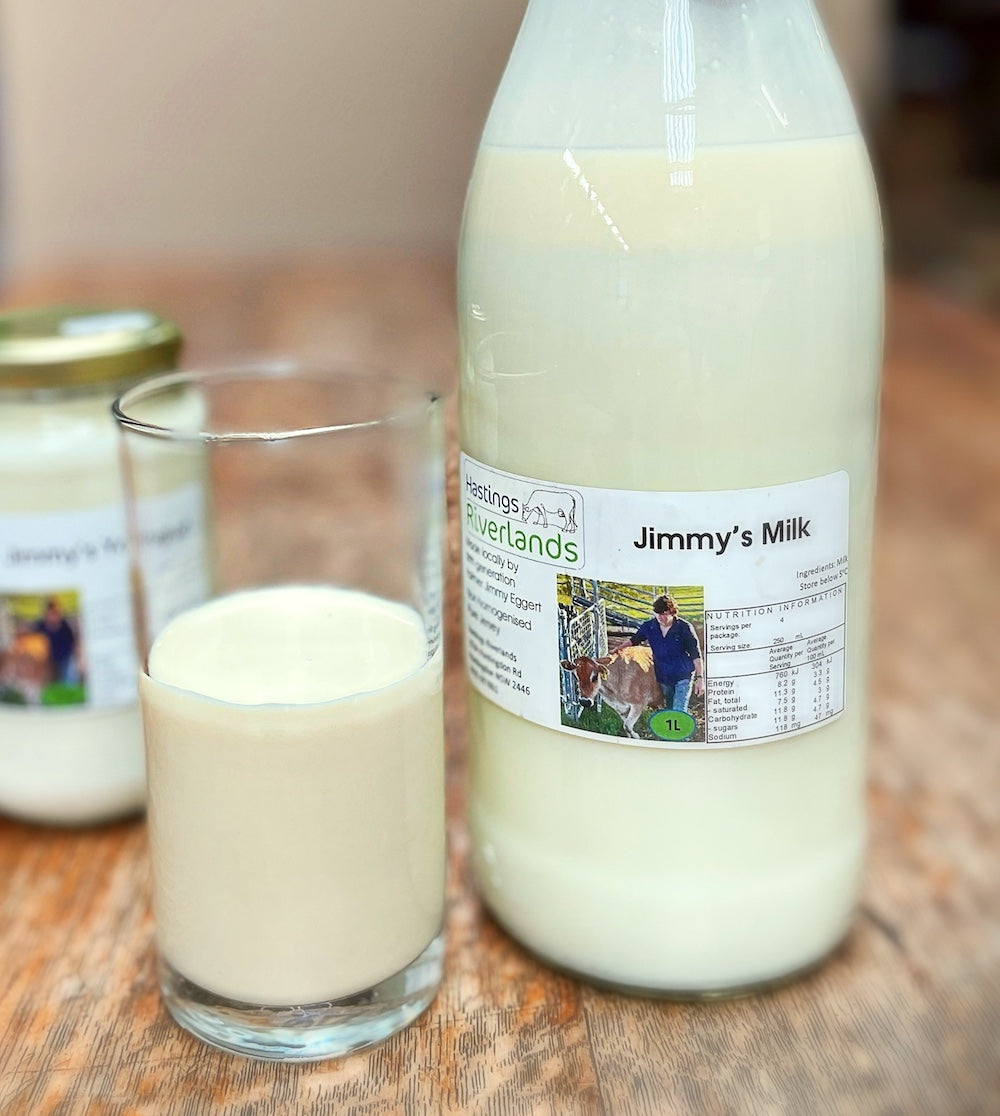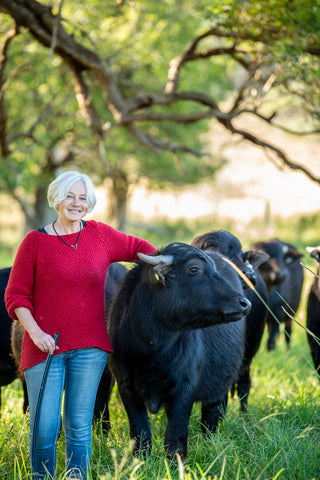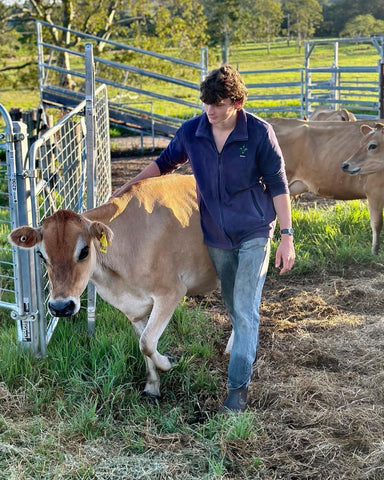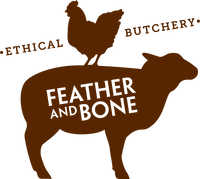
The price of milk
We sell two kinds of milk - Jimmy's Jersey cow milk and Burraduc Buffalo Milk. Yesterday, we received a one line email:
"Why is your milk $11/L?"
Here's how we answered...
The short answer to the question is that these farmers are paid a fair price for what they do.
The price reflects their expertise, the quality of their products, sustainable land management and the real cost of small scale, artisan production.
Due to the way they’re produced, these products are also more nutritionally dense than most commercially available milk. And they're delicious.
Also, Jimmy recycles his bottles, so the first litre purchase includes a one-off $2.00 to cover the bottle and thereafter, if you return your empty bottle, each litre of single-herd Jersey milk will be $8.95.
Supermarkets, where the bulk of milk is sold, can afford to sell milk cheaply, or below cost, and use it as an essential loss leader to encourage other sales. This leads to a consumer expectation that milk is and should be cheap, a situation which destroys smaller dairies and does nothing to encourage better, more sustainable production methods.
We don't agree with conventional dairy production methods, but farmers deserve a fair return and that's way too rare.
So, getting back to Jimmy's and Burraduc.
The farmers and products are different from each other, but here are some facts that are common to both.
- Each farm has a single herd - the milk isn’t a mix from different herds on different farms - so the supply chains are extremely short and the milk is very fresh.
- Both Jersey cows and buffalo yield less milk than many other breeds of dairy cows.
- Cattle and buffalo graze on regeneratively-managed pastures, free of artificial pesticides, fertilisers and GMO crops.
- Animals are moved frequently to ensure pasture and animal health - the health of any ruminant is dependent on the quality and diversity of plants available which, in turn is determined largely by the vitality of the soil. Over-grazed pastures with unhealthy soil produce less nutritious plants.
- Cows are only milked once a day which means less time trekking to the dairy, standing on concrete and more time grazing on pasture, all of which is better for the animal.
- Minimal intervention and processing is used in milk harvesting so the nutritional integrity of the milk remains largely intact.
- The only process applied is mandatory pasteurisation to meet food safety regulations and extend shelf life.
- Geat care is taken in this process, slowly bringing the milk to the minimum temperature, because rapid temperature changes shock the milk, altering the structure and destroying beneficial bacterial and flavour.
- These products are not homogenised, a heat and pressure process that incorporates the fat into the milk but which further breaks down the nutritional structure and value of the milk. Which is why you get that gorgeous plug of cream at the top.
- Both products are packaged in glass bottles which are more expensive but which avoid single use plastics.
- Both producers offer complete transparency about their practices, a benefit for consumers who want to know where their food comes from.
Here’s a bit more detail about both farms which may also help to explain the price...
Burraduc Buffalo milk and cheese
The Burraduc Riverine buffalo herd graze on pastures at Bunghwahl, near Seal Rocks, on the mid-north NSW coast. We’re the only Sydney retailer and we’ve been working together since mid-2017.
Last year, Burraduc Buffalo Dairy won the prestigious award for the National Producer of the Year in the Delicious food awards, selected over the best farmers in every category across the country.
A few important facts about Burraduc and buffaloes.
- The buffaloes are bred, raised and milked on the farm, where all the dairy products are made. This is unusual as most cheesemakers receive milk from elsewhere and don’t also breed and grow the cows.
- The closed loop at Burraduc requires a greater skill set but it also reduces handling and transport, allowing for increased quality control and freshness.
- Burraduc buffalo calves are kept with the cows until weaning at around 6 months, when the females join the herd and the males are sold as veal. By contrast, dairy calves are usually removed from cows within a week of birth to maximise the harvesting of milk.
- Keeping the calves with the mothers means that Burraduc is effectively sharing the milk with the calf, which further reduces the milk yield.
- Buffalo milk contains 43% less cholesterol, 62% more calcium, 40% more protein than cows’ milk and contains high levels of the natural antioxidant tocopherol. It’s also tolerated by many dairy-intolerant people.
- Buffaloes produce less milk than cows - about 5 to 7 litres per day compared to 28 to 30 litres.
- Buffaloes are wilder and less domesticated than dairy cows and this has an impact on milk production. They’re very sensitive to external factors and withhold milk at will if they’re not completely relaxed.
- They mature later, breeding is seasonal and more complicated, pregnancies are longer and lactation is shorter.
Of course, there’s much more to say about Burraduc, it’s a fascinating farm. You can find more information on the product descriptors and in our blog posts online and there’s also a case study in our book, The Ethical Omnivore.

Jimmy’s Jersey cow milk
Jimmy Eggert grew up on his parents’ Oxhill Organic dairy near Wauchope, inland of Port Macquarie. The Eggerts run a mixed farm and sell their milk into Norco, a milk processor in northern NSW. We’ve been buying their eggs and pigs for years and they are leaders in the regenerative farming movement.
A few years ago, Jimmy selected a small herd of around 26 pure Jersey cows from the Oxhill herd and started his own little dairy business which we’re very happy to support.
Jersey cow milk has a higher fat content which produces a richer milk and cream (this is the same breed of milk Goldstreet Dairy use to make their delicious cheeses, which we also sell). Standard milk will contain about 3.5% fat, but Jimmy’s milk is around 5% fat.
The milk and yoghurt he produces are really delicious, no doubt because of his farming and animal husbandry methods and the lack of processing.

